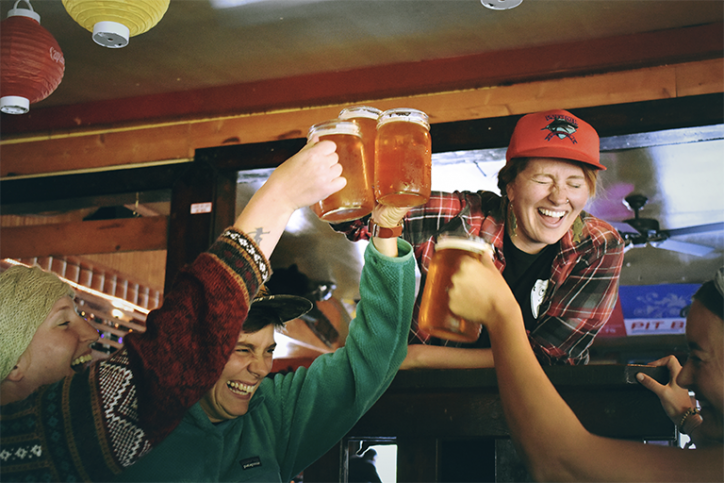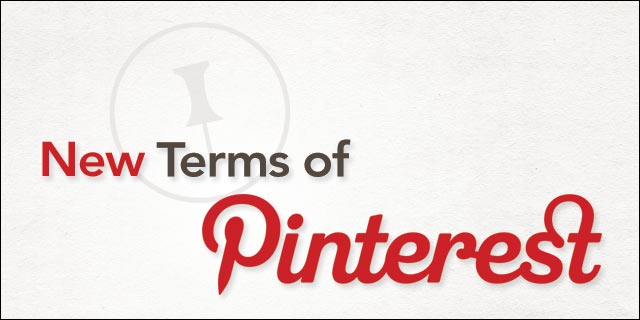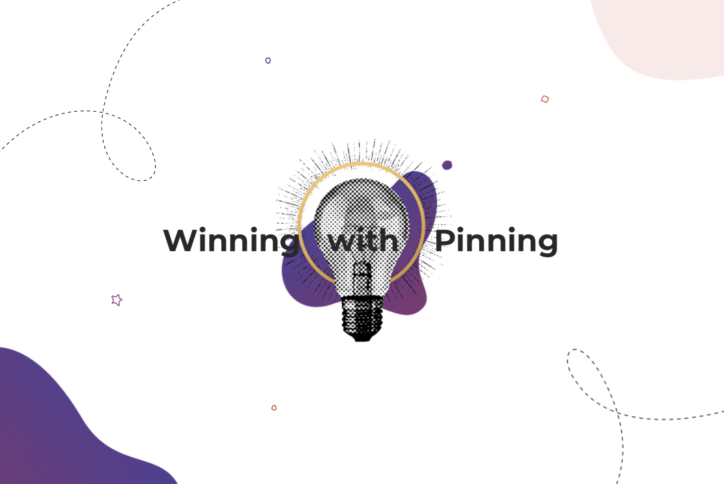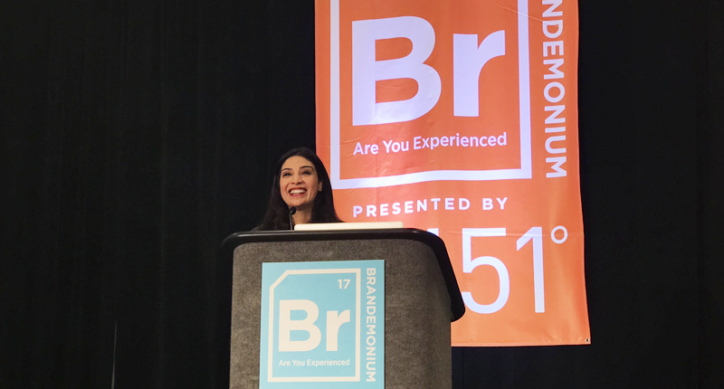
Pinterest recently updated it’s terms of service. In a blog post, they admitted that they, like many social start-ups, had used a “standard set of Terms” when they first launched. These “standard” terms included commonly used, yet troublesome wording that stated users granted Pinterest an irrevocable and royalty free license to use and even sell the content that they post to the site. The terms also made it clear, as on many other social sites, that responsibility for permission to use copyrighted material lay solely with the users and not the network. While this kind of language is not uncommon across social platforms, it seemed to raise even more concern for people who were already questioning the multitude of copyright infringement claims that they feared loomed on the horizon. While I could go on here ad nauseau about why I don’t believe that will happen (ever) I will digress.
I think Pinterest was successful in stating their basic terms of service in laymen’s terms that are easily understandable and leave little room for loose interpretations. However, what is most interesting to me in this update is what was NOT included in the changes: language that was as successful in explaining the company’s policies surrounding the running of contests, promotions or giveaways on the service. What they have done instead is explained (somewhat) what is in violation of their “acceptable use” terms:
You agree not to engage in any of the following prohibited activities: … Use the Service for any commercial purpose or the benefit of any third party, except as otherwise explicitly permitted for you by Pinterest or in any manner not permitted by the Terms;
Unlike the rest of their updated terms, this language leaves a lot to be desired in the clarity department. What constitutes a “commercial purpose?” How do you gain “explicit permission” from Pinterest?
Pinterest has had a long-standing, less-than-friendly attitude towards commercially interested users. However, it can’t be overlooked that a large part of the meteoric success Pinterest has experienced over the last few months is due to the traffic it drove to retailers like GAP and online media outlets like Real Simple over the holiday season and beyond. It would serve Pinterest well to clarify how brands are to go about promoting themselves and their products on the network.
We’ve reached out to Pinterest and are still awaiting a response. In the meantime, there are benefits to the terms remaining slightly less than crystal clear. It’s the wild west and brands looking to create successful promotions on the platform have more flexibility than on other networks like Facebook who have strict regulations around promotions. While it is important to keep in mind the general terms of service and abide by all acceptable use terms that Pinterest has outlined, brands have more leeway to try out new ideas and define success for themselves on the platform.
As Facebook and Twitter have proven, brands that are able to execute large scale, engaging and entry-worthy promotions drive long-term, sustained interest from users and help to embed the network into a user’s daily internet browsing repertoire. Sure, Pinterest being fun is great, Pinterest being useful is even better, and Pinterest being a vital piece of the online marketing puzzle for big brands is how they stay around for the long-haul.
Here are five general guidelines for creating a successful promotion on the platform:
General Good Practices for Promotions on Pinterest:
1. Keep It Simple – The less steps, the less likely entrants are to mess them up. A super simple way to have users enter is to a) follow your account, b) repin items from a specific board and c) mark entries with a hashtag specifically designated for the contest. You’ll also want to be sure you have a clear system for tracking entries and getting in touch with winners. This is where Pinterest shows it’s youth and lack of reporting tools. It’s helpful to have a dedicated email address containing all Pinterest notifications that can be easily monitored by a team member during the length of the promotion.
2. Keep it on one Platform – Things tend to get messy when users are asked to start the entry process on one platform and complete it on another. It is absolutely okay (and preferrable) to cross promote your contest across multiple platforms, which drives discovery and amplifies your efforts via sharing on multiple channels, however, for the entry portion of your promotion, be sure that they can complete it all within Pinterest.
3. Keep It Limited (time) – Contests that are run for a limited amount of time tend to drive more urgency in entering. Even if you are going to run a contest or promotion on an on-going basis, have periodic deadlines to encourage entrants to complete their entry early and often.
4. Keep It Specific – You can’t engage all of the people all of the time. Listen to your followers, be on the lookout for trends in the kinds of content they are already sharing and how they are sharing it. Then create a promotion that appeals to your most active and engaged users primarily. A good way to make promotions specific is to keep them tied to a seasonal topic or trend that has a built-in audience, i.e., weddings (early spring is when brides are actively planning weddings), back to school, Holiday entertaining, Summer travel, Weight loss and fitness etc…
5. Keep it Organic – It can’t be denied that unlike other platforms where it is uncouth to pimp your favorite toothpaste brand, Pinterest is custom built for people to talk about all the things they like, even if it is in an unofficial capacity. With that in mind, make sure any promotion or giveaway is geared towards deepening a user’s engagement with the product or brand and promotes sharing of that experience. Instead of having a single pin stand as an entry, why not require they create boards with 10-20 pins? This will in turn drive organic sharing and promotion of your products and services.
Stay tuned for more tips on running successful promotions on Pinterest.







